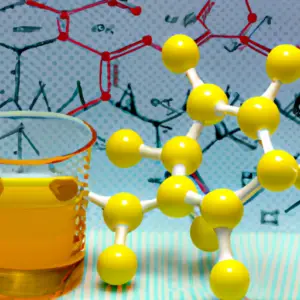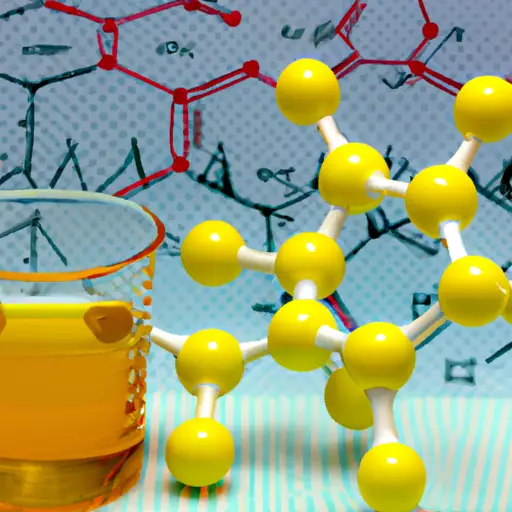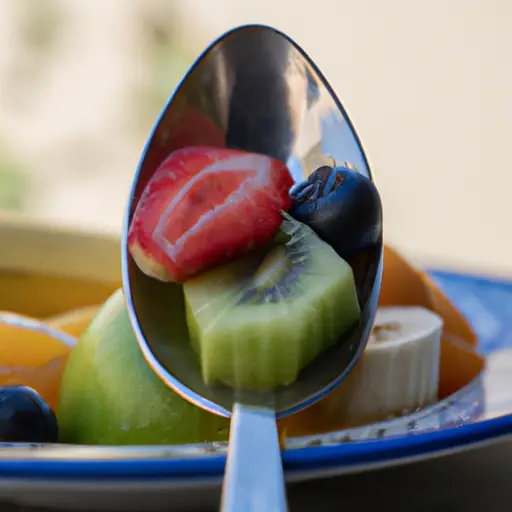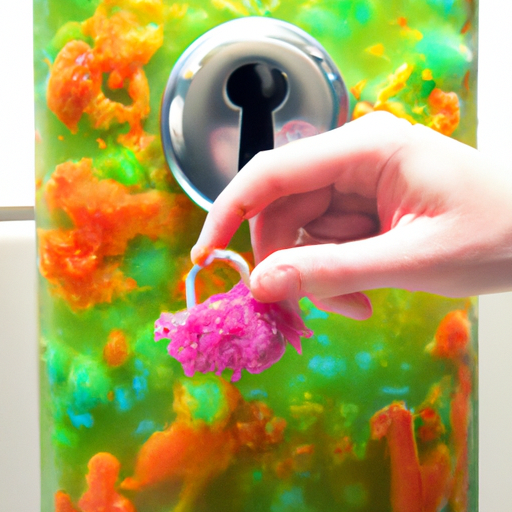Unveiling Artificial Sweeteners’ Unseen Side Effects
Artificial Sweeteners: What You Should Know
Hey there! Are you a fan of low-calorie sodas or sugar-free snacks? Then you’ve probably consumed some form of artificial sweeteners. Artificial sweeteners are synthetic sugar substitutes that are supposed to give you the taste without the calories. They’re commonly used in diet sodas, chewing gums, candies, and many other processed foods. But did you know that these sweeteners could have some nasty side effects? Let’s take a closer look!
Let’s Talk Artificial Sweeteners: The Different Types You Need to Know
So, you want to satisfy your sweet tooth without consuming the calories that come with sugar? Enter artificial sweeteners. They are low-calorie or calorie-free sugar substitutes that many people turn to as an alternative to table sugar. But did you know that there are different types of artificial sweeteners? Let’s discuss each one:
Aspartame
This is a common artificial sweetener that is often found in diet soft drinks, sugar-free gum, and many other products marketed as low-calorie. Aspartame is made from two amino acids, phenylalanine, and aspartic acid. It is a highly debated sweetener, as some studies suggest it may be linked to cancer and other health problems. However, the FDA recognizes it as safe for use at levels recommended by the agency.
Sucralose
Sucralose is a no-calorie artificial sweetener that is made from sugar. It is commonly used in baked goods, chewing gum, and soft drinks. Unlike aspartame, sucralose is not metabolized by the body and is eliminated in the urine, making it a popular choice for people with diabetes.
Saccharin
Saccharin is one of the oldest artificial sweeteners, discovered in the late 1800s. It has a bitter aftertaste, which is why it is often combined with other sweeteners in products. It is most commonly used in diet sodas and decaf coffee. Although some studies in rats have suggested that it may cause bladder cancer, it has been deemed safe for human consumption by the FDA since 2000.

Acesulfame potassium, or Ace-K, is a calorie-free artificial sweetener that is often used in combination with other low-calorie sweeteners. It is found in soft drinks, gum, and other products marketed as “reduced sugar” or “sugar-free.” While there are no known health risks associated with Ace-K, some studies have suggested that it may have a bitter aftertaste.
Potential Side Effects
Alright, folks, let’s get down to business. We’ve heard the buzz about artificial sweeteners, but what are the potential side effects we should be aware of? As someone who has tried to cut down on sugar, I was curious about these alternatives. So, I did some digging and found some interesting information.
Weight Gain
Wait, what? Artificial sweeteners were supposed to help me lose weight! Unfortunately, studies have shown that consuming these sweeteners may actually lead to weight gain. This might be because they can disrupt our body’s natural ability to regulate food intake.
Headaches
Okay, this is a big one for me. As someone who gets frequent headaches, the idea that an artificial sweetener could trigger them is concerning. Research suggests that aspartame, in particular, may cause headaches in some people.
Allergies and Sensitivities
Some people may experience allergic reactions or sensitivities to certain artificial sweeteners. For example, saccharin has been known to cause allergic reactions in some people. If you notice any symptoms like hives, itching, or swelling after consuming artificial sweeteners, it’s important to talk to your doctor.
Diabetes Risk
One of the reasons people turn to artificial sweeteners is to help manage their blood sugar levels. However, some studies have suggested that consuming large amounts of these sweeteners may actually increase the risk of developing type 2 diabetes.
Neurological Problems
This is another potential side effect of aspartame, which has been linked to neurological issues like seizures and migraines. It’s important to note that these risks are generally low and may only affect certain individuals.
So, now that we know about these potential side effects, what can we do to minimize our risk?
Firstly, it’s important to understand the different types of artificial sweeteners and which ones may be more problematic for certain individuals. Additionally, we should read labels carefully and look out for hidden sources of artificial sweeteners. Finally, opting for natural alternatives (like honey or maple syrup) may be a good option for those looking to avoid artificial sweeteners altogether.
We can’t necessarily avoid all risk when it comes to artificial sweeteners, but being aware and taking informed steps can help us make better choices for our health.
Want to learn more? Check out this great article I found on the facts about artificial sweeteners.
Why These Side Effects Are Hidden
So, you might be wondering, if artificial sweeteners have all these potential side effects, why aren’t we warned more about them? Well, my friend, let me tell you: it’s all about the money.
Firstly, there just hasn’t been enough research done on the long-term effects of these sweeteners. Without concrete evidence, it’s difficult to definitively say that these side effects are directly caused by the sweeteners themselves. However, there is growing concern among experts and consumers alike.
Additionally, manufacturers of artificial sweeteners have a vested interest in downplaying any potential side effects. Without that sweet, sweet profit, they wouldn’t exist. And, unfortunately, in some cases, they have intentionally misled the public about the safety and efficacy of their products.
Lastly, the food industry as a whole is a powerful force. They have a lot of money and a lot of sway in congress. This means that, unfortunately, sometimes profits and corporate interests take precedence over consumer safety.
So, what can you do about it? Well, first off, read between the lines when you see advertisements for artificial sweeteners. Know that there may be more to the story than what they’re telling you.
Secondly, arm yourself with knowledge. Learn about the different types of sweeteners and their potential side effects. And, if possible, choose natural alternatives instead.
Finally, speak up! Write to your representatives and let them know that you care about what’s in your food. With enough voices, we can effect change in the food industry and ensure that the products we consume are safe and healthy.
Don’t Take Unnecessary Risks: Here are Some Tips to Help You Avoid Them
Now that you know some of the potential side effects of artificial sweeteners, it’s important to know how to avoid them. Lucky for you, I’ve got some tips that can help you minimize risk and keep you healthy and happy.
Understand the Types of Artificial Sweeteners
As I mentioned earlier, there are several types of artificial sweeteners, and each one has unique properties and potential risks. Some of the most common types of sweeteners include aspartame, sucralose, saccharin, and acesulfame potassium. Before you consume any products that contain these sweeteners, make sure you understand the risks of each type.
Read Labels Carefully
When it comes to artificial sweeteners, knowledge is power. Make sure you read the labels carefully and look for any ingredients that might contain artificial sweeteners. Additionally, keep an eye out for any marketing claims that might be misleading or exaggerated. The more you know about what you’re consuming, the better equipped you’ll be to minimize potential risks.
Use Natural Alternatives
If you’re concerned about the potential risks of artificial sweeteners, there are plenty of natural sweeteners that you can use instead. For example, honey, maple syrup, and stevia are all great alternatives that can provide a sweet taste without the potential side effects of artificial sweeteners. These natural alternatives might be a bit pricier than artificial sweeteners, but they’re worth it for the peace of mind they provide.
So there you have it. By understanding the different types of artificial sweeteners, reading labels carefully, and using natural alternatives, you can minimize your risk and enjoy a healthy and fulfilling life. Don’t take unnecessary risks – take control of your health and wellbeing today!
Wrap It Up: Avoiding the Risks of Artificial Sweeteners
So, this is what I learned about artificial sweeteners. They are used as sugar substitutes and can be found in many food and beverages. However, they have potential side effects that should not be taken lightly. These include weight gain, headaches, allergies, diabetes risk, and neurological problems.
Why do we hear so little about these side effects? It’s because of the lack of research, disinformation from manufacturers, and industry lobbying. As a result, it’s up to us to take the necessary precautions when consuming artificial sweeteners.
One easy way to avoid unnecessary risk is to read labels carefully and understand the types of artificial sweeteners, which include aspartame, sucralose, saccharin, and acesulfame potassium.
Another piece of expert advice is to use natural alternatives, such as honey or maple syrup. These alternatives are not only healthier but also taste better. Plus, they can satisfy your sweet tooth without putting your health at risk.
In conclusion, it’s time to be more mindful of what we put into our bodies. By understanding the potential side effects of artificial sweeteners and taking the necessary precautions, we can minimize the risks and live healthier lives.






